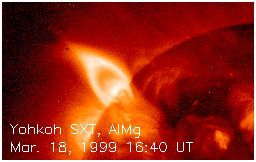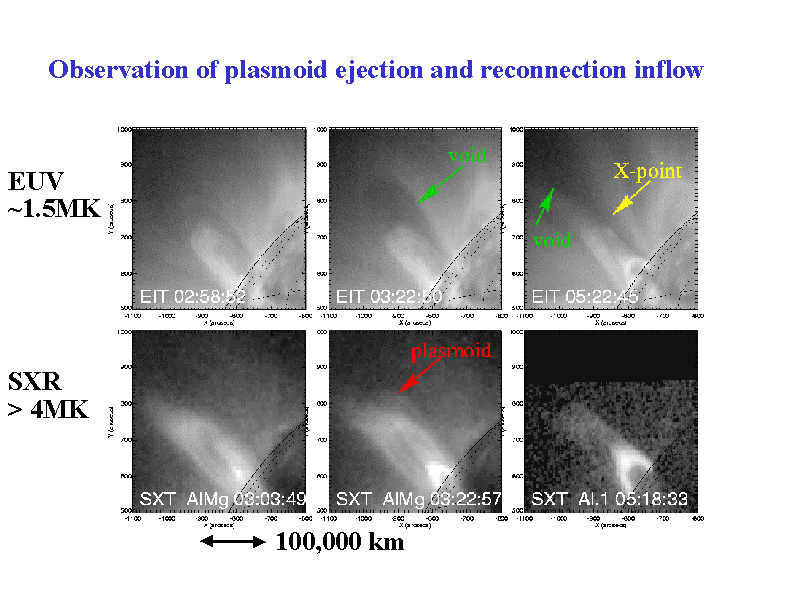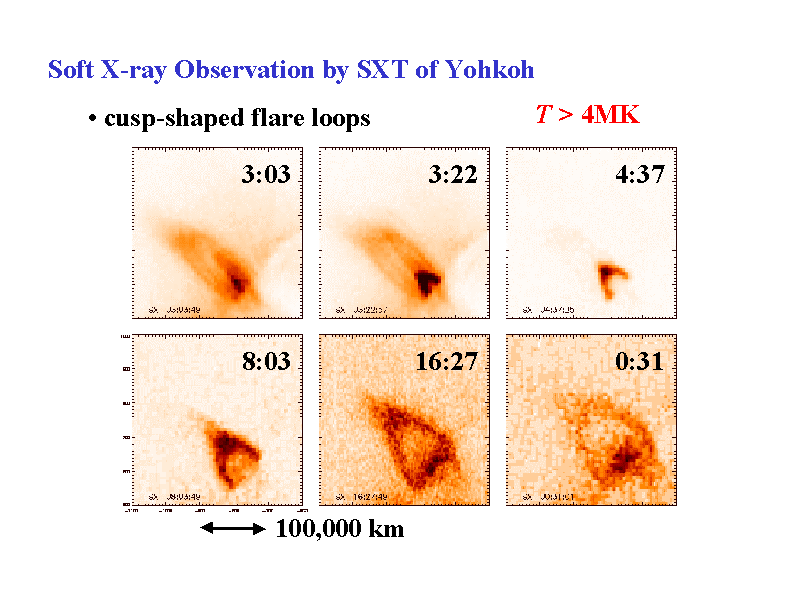
We report a success story here: an item we reported in a science nugget entitled "A magnificent cusp", just two years ago, has now been analyzed and published in a real journal. How well did the analysis match the speculation? Here is a picture of the event as seen by Yohkoh SXT:

Clearly it's a beautiful example of the phenomenon.
The overall development of the event strongly suggests the standard 2D model for large-scale magnetic reconnection, as one can see via the time series of images from SXT and EIT (left below; the images on the right show SXT development through the time of cusp formation). The pre-event hot structure seen by SXT neatly corresponds to a void seen by EIT, which responds to lower temperatures.

|

|
After the eruption, which took place between the EIT images at 03:22 and 05:22 as shown by the light curve derived from the SXT observations, a cusp-shaped hot source grew slowly up from behind the limb. At the same time the movie of EIT data (not shown in this nugget) clearly suggests a squeezing-in of the corona towards the cusp, as though the field lines opened by the CME are now reclosing. This pattern is unusual - we have not seen other clear examples of this in the SXT data - but it is exactly what is expected by the standard models, as represented in this cartoon.
The published analysis shows that the parameters of the standard model can indeed be adjusted successfully, within assumed uncertainties, to match the observations. The needed reconnection inflow velocity is 1-4.7 km/s, and the magnetic field 2.4-12 G, which seem reasonable.
We asked several questions in the original nugget:
This question wasn't very clearly posed. By "reconnection", it meant "energy release". We've made no progress here yet.
The data (see the SXT images above) show that this feature develops much later than the cusp, so it's probably not related to "tether-cutting" even though this may be a feature of the standard model.
The current analysis does not discuss the 3rd dimension. Is it important (hint: Yes)?
The analysis of this event, as published this far, really only brings us up to about the Skylab era theoretically. It does not deal with the interesting and more modern questions asked above, or others; hence we're in an unusual situation. Often we lamely end these nuggets with a plea for more data. Here it looks the other way around - we need more theory!
23 March 2001